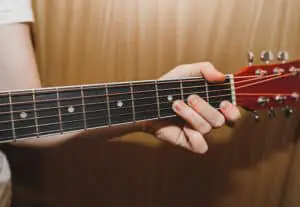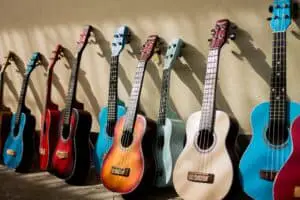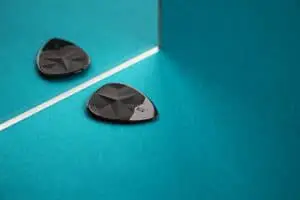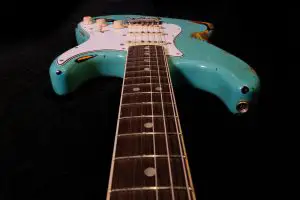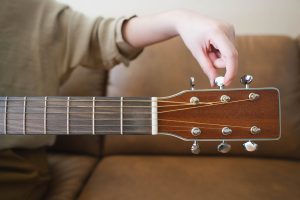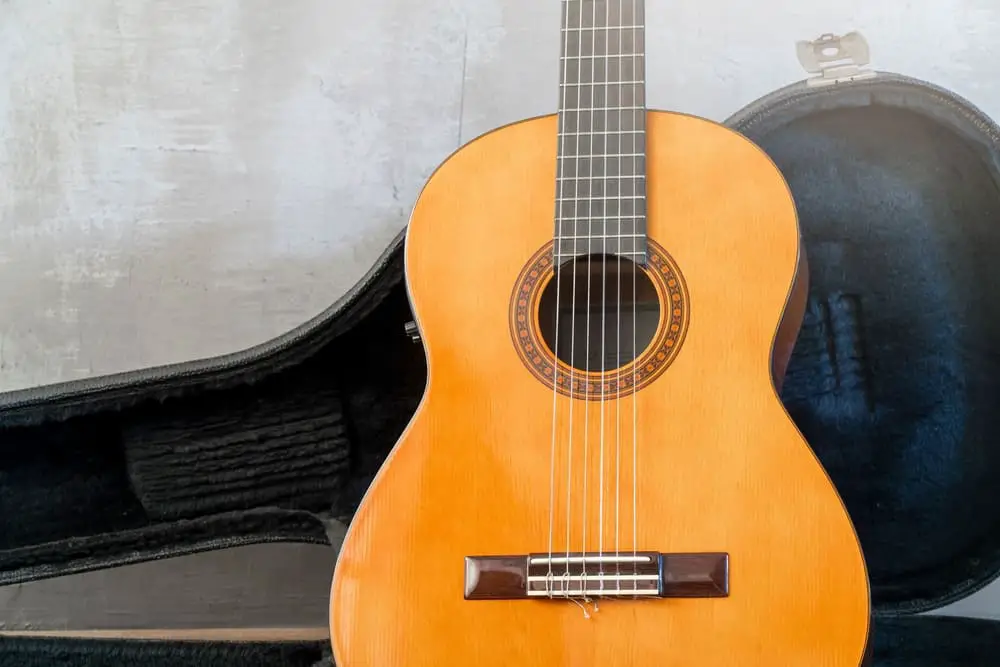
Like every other instrument, guitars come in various shapes and sizes. Many beginner guitarists don’t know that the size of your guitar can affect how fast you learn and how well you play the instrument. That’s right, the reason you’ve not gone too far learning guitar may be because you’re using the wrong guitar size. Hence, knowing the standard guitar size can help you find the right size to play with.
So how big is a full-size guitar?
A full-size guitar is usually 38-40 inches long or 96.5cm with a scale length of 25.5 inches (64.8cm). This length may vary across guitar types and brands.
Let’s look at how to measure a guitar, other guitar sizes, and everything else you need to know about choosing the right guitar for you.
How to Measure a Guitar
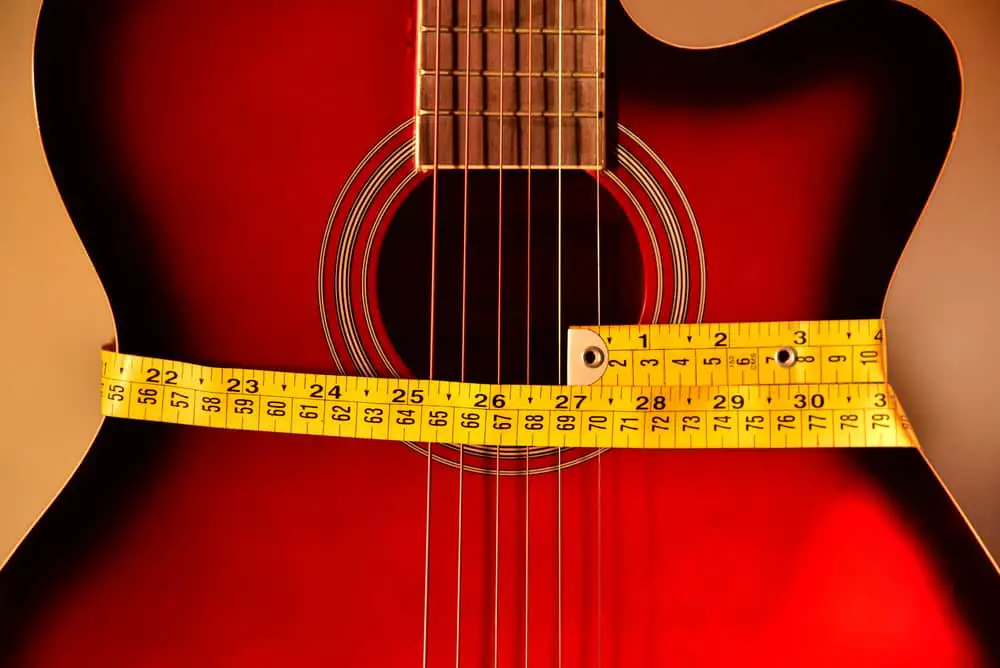
There are two ways to measure a guitar, and both can be used to measure either electric or acoustic guitars. The first involves measuring the guitar from top to bottom; this is the regular length. The second guitar measuring method involves measuring from the neck to the bridge of the guitar.
It helps to know your guitar length, but the scale length is even more important. This is because some brands have longer headstocks, and the size of your headstock doesn’t make much of a difference when you play.
Total Length Measurement
To measure the total length of your guitar, grab a tape measure–or any other measuring instrument–and start from the top of the guitar (the beginning of the headstock). Measure all the way to the end of the body. Every guitar has different body types; this is another reason why total measurement can be inaccurate.
Scale Length Measurement
A better way to measure your guitar is to start from the neck (the end of the headstock) to the bridge (the end of the strings). Unlike the total length, the scale length impacts how a guitar feels when you play it.
To find out if a guitar is full size, you should check the scale length first. If the scale length is 25 inches or higher, it is most likely a full-size guitar. Even if the total length of the guitar is less than 38 inches and the scale length is 25 inches or more, it’s a full-size guitar.
The Different Guitar Sizes

Although there are many variations of acoustic guitars, only five are widely known.
The 1/4 Guitar
The 1/4 guitar is not really the quarter of a full guitar. A 1/4 guitar has a scale length of 19 inches and a total length of about 31 inches. Its small size makes it the perfect travel guitar because you can easily slide it into your backpack. Kids of 4-6 years are advised to use this guitar size so they’ll reach chords easily.
The 1/2 Guitar
You’d expect the 1/2 guitar to be half a full-size guitar, but it’s not. This guitar size is popular among young students. This guitar size measures 34 inches, and kids aged 5-8 can play it comfortably. Its small size also makes it a popular travel accessory.
This is the perfect guitar for kids aged 8-11 years. They have a length of 36 inches, so they’re commonly called 36-inch guitars.
The 7/8 Guitar
This guitar is made for young beginners or women with small fingers. It’s only a bit smaller than the full-size guitar, so many beginners opt for it.
The 4/4 guitar
The 4/4 guitar is the standard full-size guitar. Kids aged 12 and above can start playing with this size.
Takeaway
There is no one size fits all size when it comes to finding the right guitar for you. Your best bet is to do plenty of research. If you’re having problems finding the right size to order online, walk into a nearby guitar store, and you’ll easily make a decision.
Frequently Asked Questions
If the scale length is 25 inches or more, it’s a full-size guitar. It doesn’t matter if the total length is longer or shorter than 38 inches. The scale length is the most accurate determinant of guitar size.
A bigger guitar will be harder to grip further up the fretboard. It’ll also be difficult to reach notes and play chords.
There is a guitar size for every hand size. Moreover, big hands make it easier to make bar chords. The only downside is you may find it difficult to play single notes. Someone with small hands will find it easier to play notes but won’t play chords easily.




